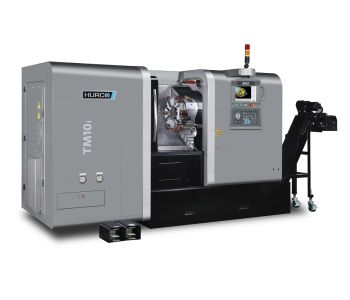In the world of manufacturing and machining, CNC (Computer Numerical Control) lathe machines stand out as versatile and indispensable tools. These machines have revolutionized the way parts and components are fabricated, offering precision, efficiency, and automation.
Understanding CNC Lathe Machines
A CNC lathe machine is a computer-controlled machining tool used for shaping materials such as metal, wood, plastic, and composite materials. Unlike traditional manual lathes operated by human operators, CNC lathes are automated and programmed to perform precise cutting, drilling, turning, and milling operations with high accuracy and repeatability.
The core components of a CNC lathe machine include the spindle, chuck, tool turret, carriage, tailstock, and control unit. The control unit, often equipped with software like G-code programming, directs the movements of the machine’s axes and coordinates the cutting tools’ actions.
Types of CNC Lathe Machines
2-Axis CNC Lathes: These machines operate in two axes, typically the X and Z axes, allowing for linear movement along the workpiece’s length and diameter. 2-axis CNC lathes are suitable for basic turning and facing operations.
3-Axis CNC Lathes: 3-axis machines add another axis, usually the Y-axis, enabling more complex machining operations such as contouring, threading, and grooving.
Multi-Axis CNC Lathes: These advanced machines feature additional axes, often including B-axis for angular positioning and C-axis for rotational indexing. Multi-axis CNC lathes are capable of producing highly intricate and detailed parts with complex geometries.
Swiss-Type CNC Lathes: Swiss-type lathes combine CNC technology with sliding headstock and guide bushing systems, allowing for high-precision machining of small, intricate components used in industries like medical devices and electronics.
Uses of CNC Lathe Machines
Turning Operations: The primary function of a CNC lathe machine is turning, which involves rotating a workpiece against a stationary cutting tool to remove material and create cylindrical or conical shapes. Turning operations are used in producing shafts, pins, bushings, and other cylindrical components.
Facing and Grooving: CNC lathes can perform facing operations to create flat surfaces on the end of a workpiece. They can also groove or cut channels along the workpiece’s surface, adding features such as threads or grooves for O-rings.
Threading: CNC lathe machines are equipped with threading tools to cut internal and external threads on workpieces. This is essential for creating threaded components like bolts, screws, and nuts.
Drilling and Boring: Some CNC lathes come with drilling and boring capabilities, allowing for the creation of holes and bores within the workpiece. This is commonly used in manufacturing parts with internal features such as engine cylinders and valve bodies.
Taper Turning: CNC lathes can also perform taper turning operations, producing tapered surfaces or profiles on workpieces. This is useful for creating components like conical spindles and tapered shafts.
Key Processes in CNC Lathe Machining
Programming: CNC lathe machining begins with programming, where the desired part geometry, toolpaths, speeds, and feeds are defined using CAD/CAM software. The programming generates G-code instructions that the CNC lathe follows during machining.
Setup and Workpiece Preparation: Once programmed, the workpiece is mounted securely in the lathe’s chuck or collet. The machine’s tool turret is loaded with cutting tools based on the programmed operations.
Tool Setup and Toolpath Execution: The CNC lathe automatically selects and positions the appropriate cutting tools based on the programmed toolpaths. The toolpath execution involves precise movements of the cutting tools along the workpiece’s surface to remove material according to the programmed geometry.
Chip Removal and Coolant Use: As the machining progresses, chips are generated from the cutting process. CNC lathes are equipped with chip conveyors or coolant systems to remove chips and maintain proper lubrication and cooling of cutting tools and workpieces.
Quality Control and Inspection: Throughout the machining process, quality control measures are implemented to ensure dimensional accuracy, surface finish, and adherence to specifications. Post-machining inspection may involve measuring tools, CMM (Coordinate Measuring Machine), or other inspection methods.
Advantages of CNC Lathe Machines
Precision and Accuracy: CNC lathe machines offer high precision and accuracy in machining, resulting in consistent part quality and tight tolerances.
Automation and Efficiency: The automation of CNC lathe operations reduces manual labor, improves production efficiency, and enables continuous machining with minimal downtime.
Complex Geometry Capability: Multi-axis CNC lathes can produce complex geometries, contours, and profiles that are challenging or impossible to achieve with manual machining methods.
Cost-Effective Production: Despite initial investment costs, CNC lathe machining can be cost-effective in the long run due to reduced scrap, lower labor costs, and improved productivity.
Versatility and Flexibility: CNC lathe machines can handle a wide range of materials, part sizes, and geometries, making them versatile for diverse manufacturing applications.
Also Read: Understanding CNC Lathes with Essential Accessories & Software
Conclusion
CNC lathe machines are indispensable tools in modern manufacturing and machining industries. Their ability to automate complex machining operations, achieve high precision and accuracy, and produce a wide range of parts and components makes them invaluable assets for businesses seeking efficiency, quality, and versatility in their production processes.

